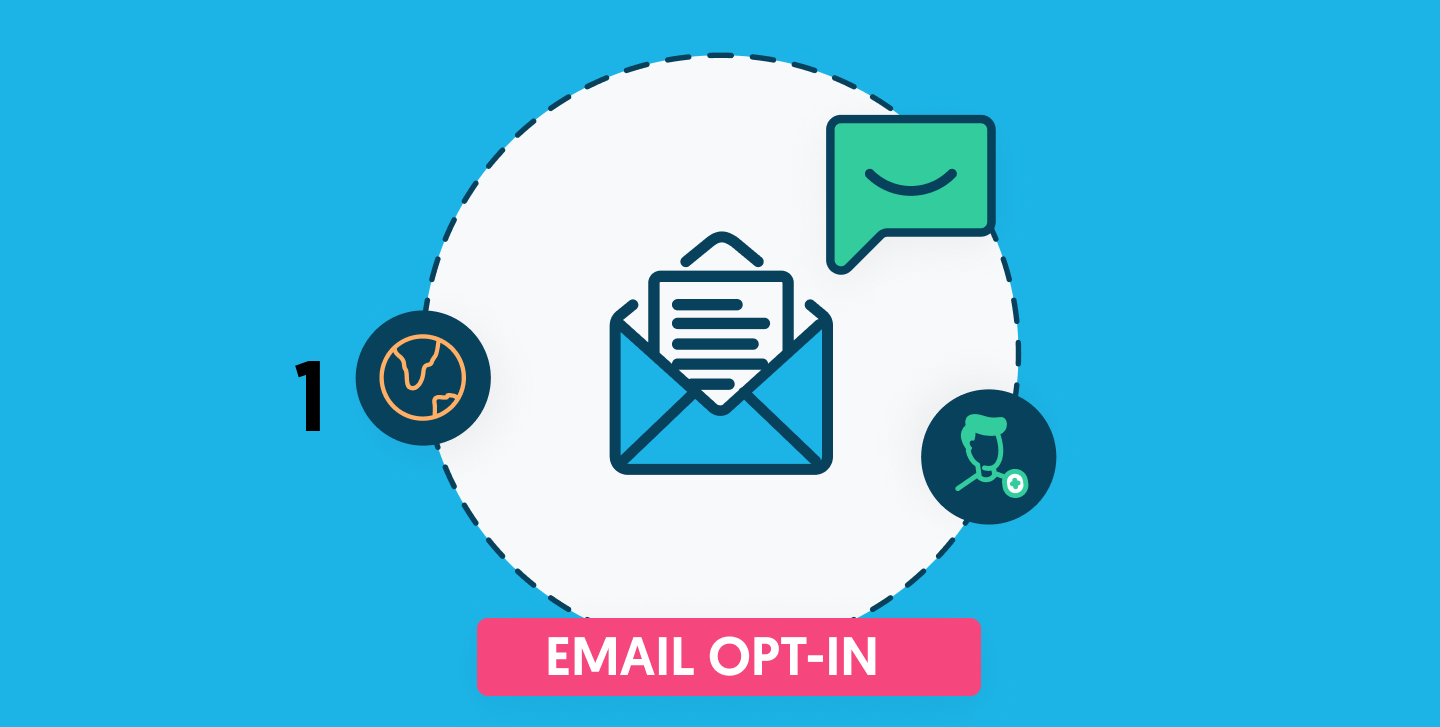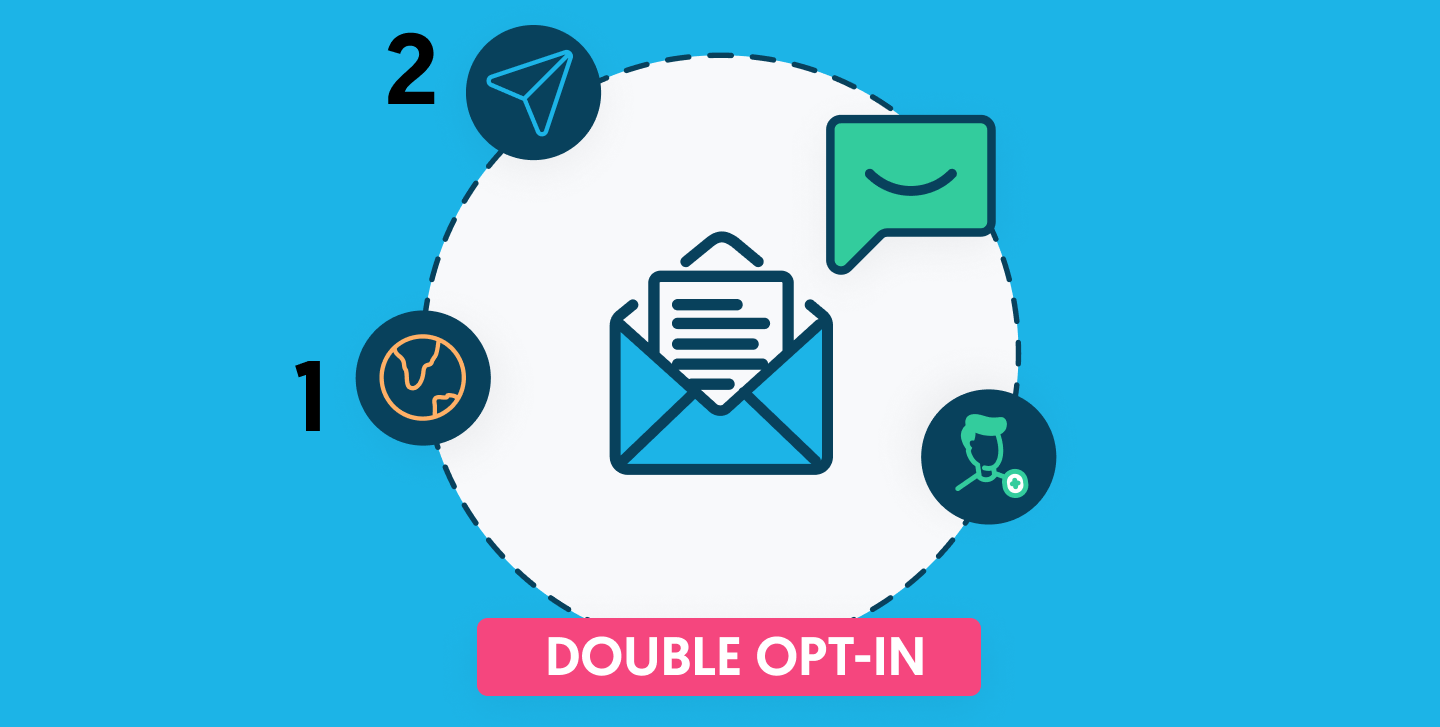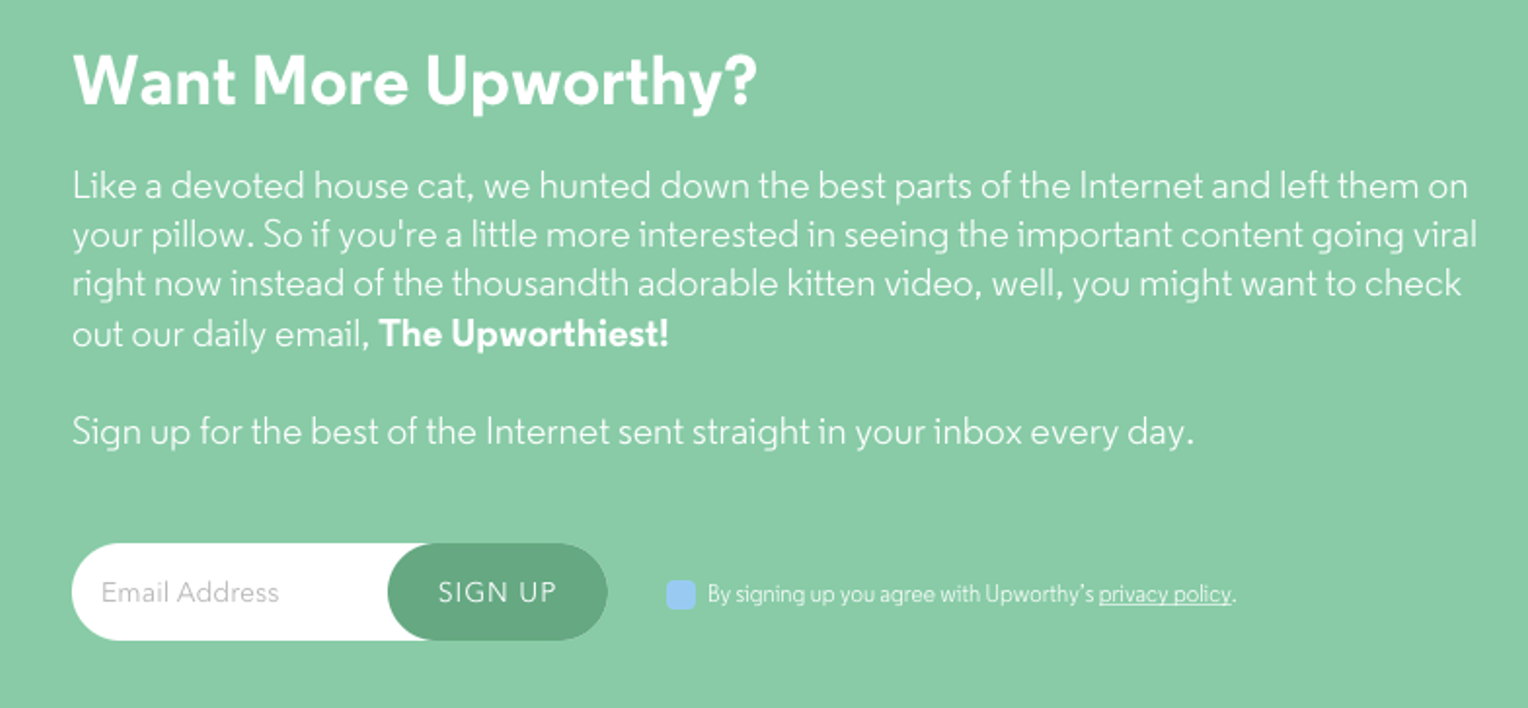Email opt-in: win loyal customers with permission email marketing
Learn what is permission based email marketing & opt in email marketing. Earn loyal customers and vocal advocates by applying email opt in best practices

Let’s take a deep dive into permission based email marketing, also known as opt-in email marketing. We’ll cover what permission email marketing is, it’s major benefits to your business, and the best practices for composing email opt in forms.
Fact is, email opt-in is a powerful way for any small business to achieve steady growth by constantly acquiring high value dedicated users. If you have a website, or another digital asset with constant incoming traffic, you can tap into that stream of new users to build a firm base of loyal customers (and even vocal advocates).
What is email opt-in?
Opt-in email marketing is a method of permission based email marketing where users willingly opt in to your email list. When opting in users expect you to provide interesting and beneficial content, or they may otherwise opt out. Permission email marketing allows you to build a loyal customer base through newsletters, promotions, and more.
Single opt-in vs double opt-in
There are actually 2 kinds of email opt-in in widespread use today, a single opt-in nd a double opt-in. The different lies in the number of steps that a user is required to take before being added to your email list. There are pros and cons for each method.
In general the single opt-in is easier to achieve for most users, and hence gathers more subscribers. The trade-off is lower subscriber quality, meaning weeker loyalty and lower engagement. A double opt-in will produce less opt-ins but will ensure high quality, loyal followers that are more likely to be converted to paying customers.
While the heated debate over which is better, single or double opt-in, still rages on, this article will cover the benefits and use cases of each method in depth, so that you could decide for yourself.

Single opt-in email marketing
A single email opt-in is done by giving your users just 1 required step in order to subscribe to your email list. This is usually done using a “subscribe” button. Once users give you their email address, they automatically get added to your mailing list and receive your emails.
Double opt-in email marketing
Double opt-in email marketing is the process of signing up for an email list in 2 steps. First users are required to click a subscribe button, then an email is sent to their inbox with a confirmation link, which they then have to click as a second opt-in step. Only when users click that link will they be added to the email list.

How can opt-in email marketing benefit my business?
Opt in email marketing will let you reach more potential customers and build up a highly targeted audience base that already gave you their trust and showed interest in what you have to offer.
An opt in email list helps you do the following:
- Build a deep and stable relationship with your target audience.
- Create a loyal base of potential customers.
- Measure your marketing success by tracking opens, clicks, and shares.
- Benefit from a highly-effective marketing strategy.
- Quickly build up an email list.
- Increase the open rate of your emails.
- Simplify the process of following up on a buyer.
It could help to see an example of what a great opt-in email form looks like so you can get a sense of what it entails. Here is one from the popular site Upworthy:

What makes opt-in email marketing such a high performing marketing channel?
Why put visitors to your website through the trouble of having to go to their email and take an additional step? There are a few benefits to doing this. These include the following:
1. Better quality mailing list
The double opt-in email list method reduces the number of people who sign up and are not really interested in getting your emails. Someone has to be a little bit more committed to receiving them in order to go through the process of opening up their email account, opening your email, and clicking on the provided link. The higher quality your email list is, the better your open and click-through rates will be.
2. Opportunity for immediate interaction
A double opt-in email strategy lets you interact with your new subscribers immediately due to the automated confirmation email that gets sent to them. The engagement with this email by the new subscribers creates the first two-way interaction between your business and your subscribers.
3. Low unsubscribe rate
Permission-based email marketing will also reward you with having a low unsubscribe rate. People who went through the extra step of the double-opt-in are committed to receiving your emails and are less likely to get annoyed when you send them emails (albeit without reason).
4. Better click-through rate
If you want to have a higher click-through rate, then a double opt-in email is the way to go. You will enjoy a low unsubscribe rate. People will welcome your emails and look forward to seeing what you have to offer them, leading them to click on the links provided in your emails.

What is a good email opt-in rate?
A good email opt in rate would normally be 5% and over. But no matter what’s your opt in rate you should always attempt improving it by making changes based on user behavior data (some companies boast opt in rates of 25% so assume anything is possible).
On average, email opt-in rates normally range between 1% and 5%, if you’re within this range then your doing OK. If you’re below this, then you likely have some serious UX or technical problem.
Keep in mind, that there are many of factors that affect your email opt-in rate depending on your specific website, so learning from others may not always work for you. You need to analyze your own website to locate YOUR friction points.
Even more still, opt-in rates may differ drastically between different industries or niches. In the end striving always to improve using AB tests, user testing and interviews is your only safe bet for continually optimizing your opt-in rate.
How do you write an opt-in email?
Since you obviously want to ensure your email opt-in rate is as high as it can be, you will want to follow a few steps. These will boost your opt-in rates sky-high and provide you with the most valuable subscribers that can turn into sales down the road.

1. Be clear about what your customers are opting into – Avoid bait-and-switch tactics because they will ultimately cause more harm than good. Your opt-out rate will go through the roof if your customers are not getting what they expected.
2. Split up your email lists – You don’t need to have a one-size-fits-all email list. What you can do is have different lists for different topics that you will be sending emails about. This lets your potential customers pick only what they are actually interested in.
3. Provide compelling offers – Put yourself in the shoes of your website’s visitors would you sign up for your email list? If not, then provide a more compelling reason to do so. You could offer a freebie of something to incentivize people to sign up.
4. Keep your opt-in short and simple – Two lines should be the max you should make your email opt-ins. Nobody wants to read a wall of text. Explain why they should opt-in and that’s it.
5. Create separate opt ins for unique email lists based on audience – Every landing page or group of landing pages on your website that promote anything unique should get a dedicated opt-in form. Going for a one shoe fits all tactic can cost you opportunities to get more subscribers with specific needs. This is also an opportunity to create a separate email list that target that audience with those specific needs.
6. Stay consistent – Consistency is key with email opt-ins. Whichever pages you decide to place your opt-ins on, make sure you place them in the same area. Also, keep the text the same to keep things simple.
Email opt-in best practices
To make the most of opt-in forms, you should follow a set of best practices. These will help you enjoy great success with this vital email marketing strategy.
1. Use as few form fields as possible
The less field you have on an opt-in form, the more successful it will be with getting people to fill them out. Studies have found that with each additional field you add to your opt-in form, you will get a 13% drop in the number of people filling them out.
This effect is called “interaction cost”, where each additional step a user has to take to complete a task will reduce the likelihood that they will ever complete it.
With this rule in mind, you should assess the necessity of each step and weigh its contribution to your business goals against its reducing effect on your form conversion (AKA the amount of people that will complete the form). But as arule of thumb anything more than 2 fields is not likely to be worth the extra information you gather.

2. Give an enticing offer or free gift
People love free stuff. Growing your email list quickly is possible when you offer something your audience will want.
Below is an example of something that works well as a free offer to encourage people to sign up. But take note that this seamingly opt-in email example walks the fine line between permission and non-permission based email marketing. Are users in this example opting in to your email list, or are they just opting in to get your free e-book?
It would have been better to add an additional opt in mechanism with a check box asking the user for permission to send her marketing, or promotional material.
For example: “Receive weekly emails with further reading recommendations and other offers”
Notice I was specific with regards to the frequency of the emails I intend to send and the nature of their content.

3. Stick to 3 opt-in forms max
You shouldn’t have more than three different opt-in forms. This ensures your website looks clean and provides visitors with an enjoyable experience.
4. Get to know your prospects
You should avoid making assumptions about your would be subscribers. To make highly effective forms you’ll need to know who your audience is. You’ll need to understand how your users are, what’s important to them, what they expect from you, what words they use within the context of your offering, etc.
This means you will need to do some audience research. It’s easiest to do by using an email list software that provides you with user metrics and stats. These will help you monitor and analyse how well your email campaigns are going and glean insights into what you may be doing better.
5. Be very clear on what you offer
People are picky on who they give their email address to, and a further truism is that no one will opt in to something they don’t understand. Understanding this you should be very careful to make it clear what it is that you’re offering.
In order to opt-in people will expect you to answer these questions:
- What content will I get?
- How do I know that I don’t get spammed?
- How often will I get these emails?
- Can I unsubscribe? Is it easy?
- Will my email be shared with a third party?
Below is an example of well made and extremely trust inspiring opt in newsletter from by a leading site on UX:

6. Use clear and widely understood wording
Some companies feel that users are bored with the word “newsletter” so they give their newsletter a “fun” name to spice things up. This can be a good idea, as long as you don’t stray so far from your meaning, so that people don’t understand what it is that you’re actually offering.
Would saying “join our Fresh Insight” be clear to users that you mean “subscribe to newsletter”? Clarity trumps New or Cool.
7. Consider adding and eye-grabbing image
Adding an image to your subscription form can pull the eye inI to it. But for this to work in your favor the image has to diver attention to the form. A know trick to achieve this is to use a photo of a person that is looking or pointing towards the form.
What you should avoid, is adding a person that’s looking directly at the “camera”, or even worse, looking away from the form. You have loads of free images you can use on this list of the best free image sites.
8. Use social proof in your copy
In the copy you write for your opt-in form, you can show off some of the social proof you have. If you have 10,000 subscribers to your email list, make it known! It tells people that you must be providing something of value.
9. Avoid using links to ask for subscribers
You want to avoid being one of those people who has a “Subscribe” link on your website. It’s not that effective and there are plenty of easy-to-use opt-in forms that will boost the number of subscribers to your email list. Don’t make it something people don’t like about your website.
What is the legal role of GDPR in permission email marketing?
We briefly mentioned about there being certain regulations in place when it comes to email marketing. The big one today is GDPR. Standing for General Data Protection Regulation, GDPR is considered to be the most stringent privacy and security law anywhere in the world. It was passed by the European Union and was effective as of May 25, 2018.
This new set of rules gives EU citizens greater control over their personal data. The law was meant to simplify the complex regulatory environment for businesses so that they and EU citizens could both benefit from the ever-increasing digital economy.
The types of personal data that GDPR protects includes the following:
- Basic information (name, address, official ID numbers)
- Internet data (location, IP address, cookie data, RFID tags)
- Health and genetic information
- Biometric data
- Information on race or ethnicity
- Information on political opinions
- Sexual orientation
Any company that stores or processes the personal data of EU citizens within EU nations will need to follow the GDPR rules. Even if your business is not physically located within the EU, you will have to comply with the new law. Here are all of the criteria. If your business matches any of these, then you will need to abide by it:
- Physical location in an EU nation
- Processing of personal data of EU citizens
- A company with over 250 employees
- A company with under 250 employees but processes data in a way that affects the rights and freedoms of EU citizens.

Permission-based email marketing vs non-permission-based email marketing
Given the reality of most businesses being required to comply with GDPR, you will want to brush up on what is permission-based email marketing and how it differs from non-permission-based email marketing.
With permission-based email marketing, you are only sending emails to a person who has provided you with their consent to receive some sort of communication from you. They basically understood what they were getting themselves into. They will have known that by signing up for your email list, they would be receiving some sort of enticing value, which could include:
- Free report
- Free trial
- Discounts
- Webinar
- Helpful content
In exchange for receiving something valuable, they will have agreed to sign up for your email list. They gave you their permission to send them emails. As long as you will be sending them emails that provide value for them, they will stay subscribed.
Non-permission-based email marketing, on the other hand, is when someone receives emails they didn’t sign up for. This is a rare occurrence, but it does still happen. Today’s spam filters are usually quite good at blocking these from ever clogging up your inbox but they will sometimes slip through the cracks.
Non-permission-based emails can come from the following sources:
- Someone buying an email list from a company selling them, which you can avoid by cloaking your email address on your website.
- Someone you gave your email address to then sold that contact information to a third party.
- Someone locating your email address somewhere on the internet and then sending you cold emails in hopes of doing business with you.
You shouldn’t come across these too often but it’s good to keep informed as to how they occur in the first place.
Conclusion
Email marketing is essential for any small business. One of the key strategies to get more people signed up for your email list is using a stellar email opt in form. Now that you know what it entails and how to set up one that skyrockets your number of subscribers, you can get started on it!

